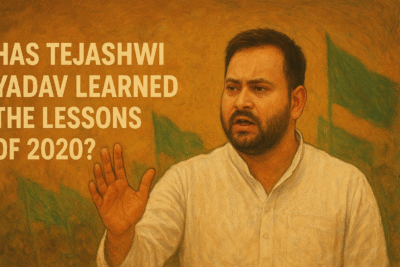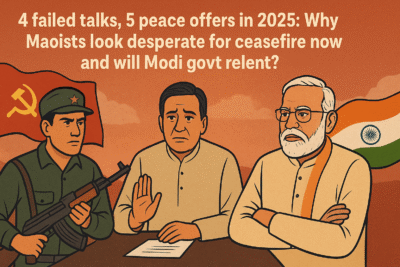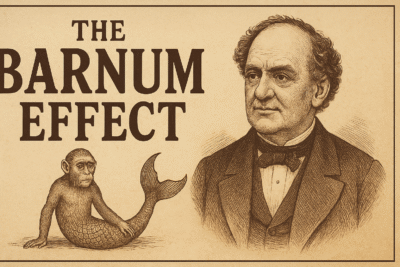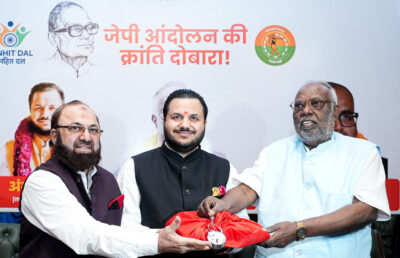
Picture for representation only (Photo: TFP)
Kashmir… This word has emotive connotations in two big South Asian nations, India and Pakistan. Whenever this word is uttered, a part of their conscience-sentiment gets stirred up. They start feeling as if they have been cheated by someone. Who? The answer does not have a definite article. It’s complex. People become staunch nationalists, and get angry and confused at the same time for they don’t understand what Kashmir is.
So, what’s Kashmir?
Kashmir is a part of the Indian state of Jammu and Kashmir, which also includes Ladakh and Aksai Chin captured by China during the 1962 war. Geographically speaking Kashmir consists of high mountains in the Himalayan and trans-Himalayan ranges hosting several highest peaks and a beautiful vale of Kashmir. It includes Pak-occupied Kashmir as well. Aksai Chin forms part of Ladakh, a different geographical expression from Kashmir.
History
Kashmir finds mention in ancient texts of India and Tibet. The mythology goes that it was founded by a sage called Kashyap, who is said to have drained a lake to reclaim the valley or land. So, the name Kashmir. During Chandragupta Maurya’s time or Alexander’s invasion Kashmir was a political entity and part of the expanding Magadh Empire.
A few years later, Ashoka is credited with quelling a rebellion there. Like all ancient political units, the history of princely Kashmir is fraught with wars and bloodshed. This continued till 1860 when the present geographical denomination of Kashmir came into existence. The British recognized this.
The Partition
The India Independence Act, of 1947 paved the way for the creation of India and Pakistan. At that time India had over 550 big and small princely states. They were given the option of, under the Act, going to either side or remaining independent.
Most of the states signed treaties and merged with India or Pakistan. A couple of Kings showed resistance or reluctance. The King of Kashmir, Hari Singh was not willing to join either. And, he made it clear. So, technically speaking at the Independence, three countries came into existence: India, Pakistan and Kashmir, which comprised Jammu and Ladakh as well.
The Problem
Pakistan-sponsored militia-invaded Kashmir in September 1947 under the guidance of Major General Akbar Khan of Pakistani Army. Hari Singh did not have enough means to protect his state or himself. He asked the Indian government to come to his rescue. The Indian leadership headed by Pt. Nehru and Sardar Patel did not accept the request immediately.
They first asked the King to sign a treaty for merger with India saying that similar treaties had been signed by other princely states. This treaty with the King is known as the Instrument of Accession, which was signed in October 1947.
Now, Indian forces landed on the territory of Kashmir. But by then Pakistan-backed forces had occupied almost one-third of Kashmir. The Indian government decided to protect the capital of Kashmir and the princely house there.
It did not wish to push Pakistani forces beyond Kashmir, by now the territory of India. Perhaps, the Indian leadership could not understand the meaning of Kashmir’s merger with India. Here lies the core political problem of the status of Kashmir.
Going to the UN
India took the matter to the United Nations. India filed the case under Article 37 instead of Articles 36 and 51 of the Charter. Simplified, Article 36 refers to the invasion of a sovereign territory by an outside power. While Article 37 refers to the invasion of a territory disputed between the two countries, by one of them.
Lodging the complaint under Article 37 was the negation of the India Independence Act. Simply put, despite Kashmir having become an integral territory of India, the government of India admitted at the UN that a part of it was not surely under its sovereignty.
The Resolution
The UNSC Resolution 47 on Kashmir was passed. It asked for the appointment of two neutral observers by the UN and holding a plebiscite in Kashmir to determine the democratic will of the resident population.
The Two Conditions
The UN clamped two conditions.
1. that Pakistan should withdraw its troops from Kashmir
2. having seen that India should do the same before an actual plebiscite could be held.
The Follow-up
Pakistan never thought of going back from Kashmir. And, so India was not bound to either withdraw or hold a plebiscite. Though, India has been holding parliamentary and state elections there and it is forwarded as a sort of plebiscite by the Indian think tank.
But technically nothing could be done about the UN Resolution. And, this is where the Kashmir issue stands today.
Violence in the Kashmir Valley is a by-product of internal and international politicking (not politics).




2 thoughts on “What is the Kashmir problem?”